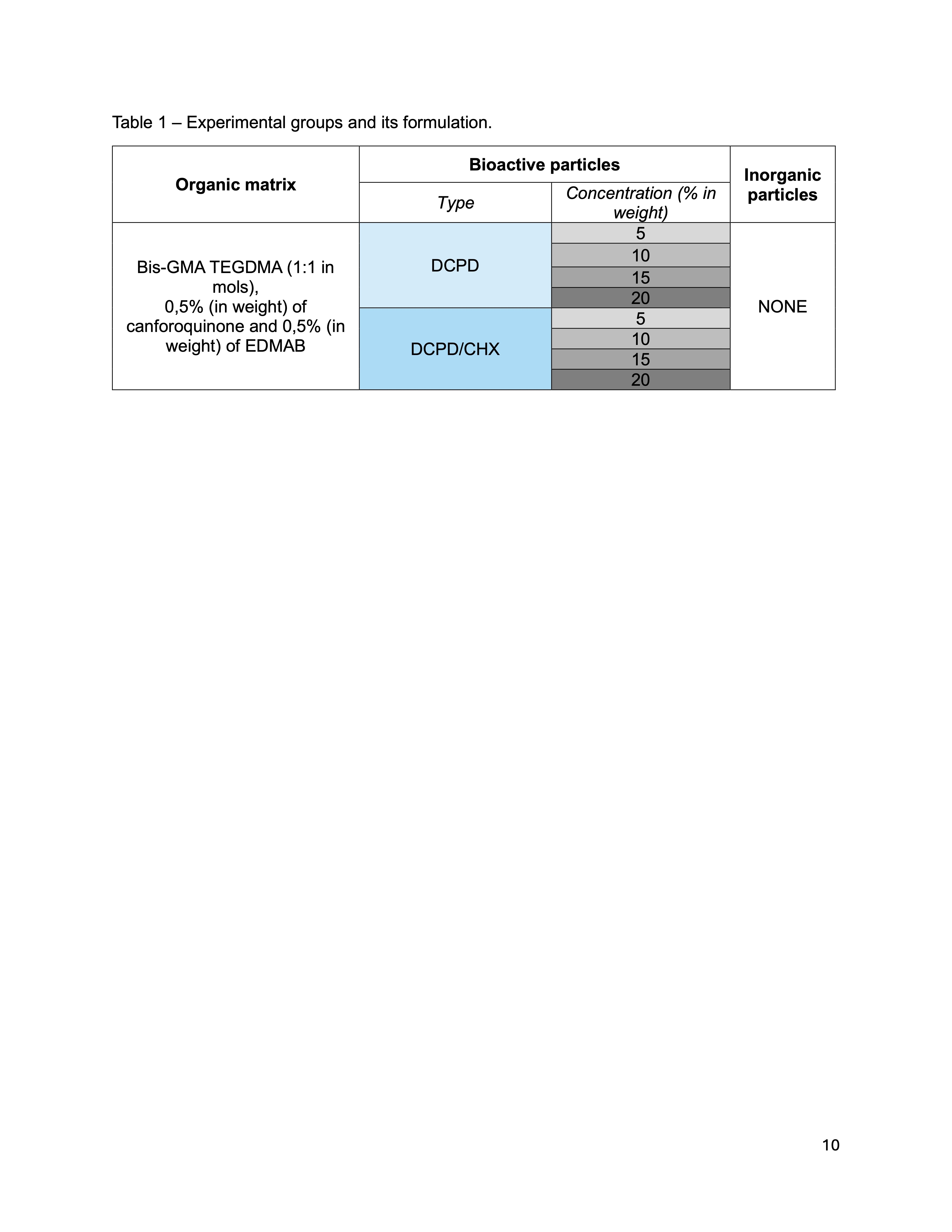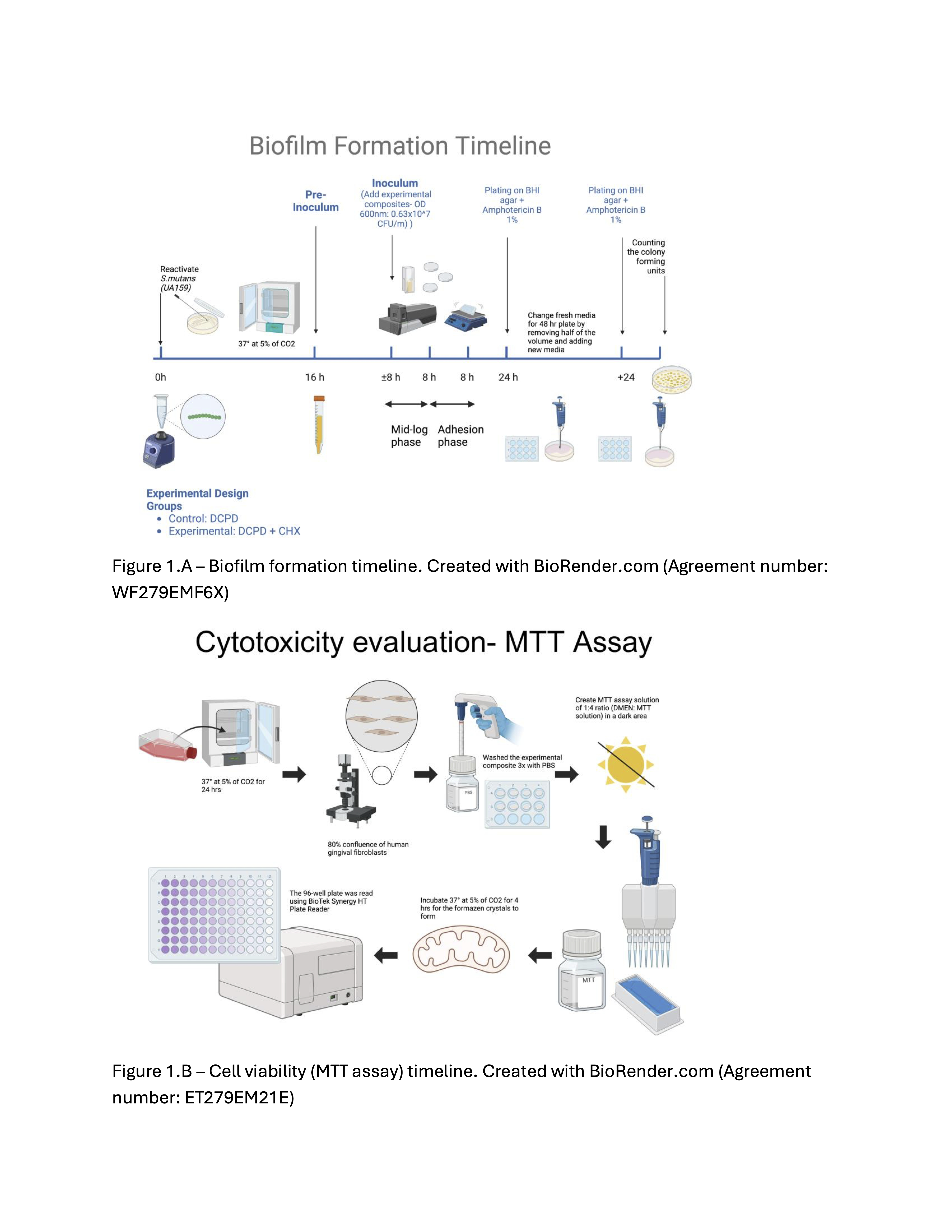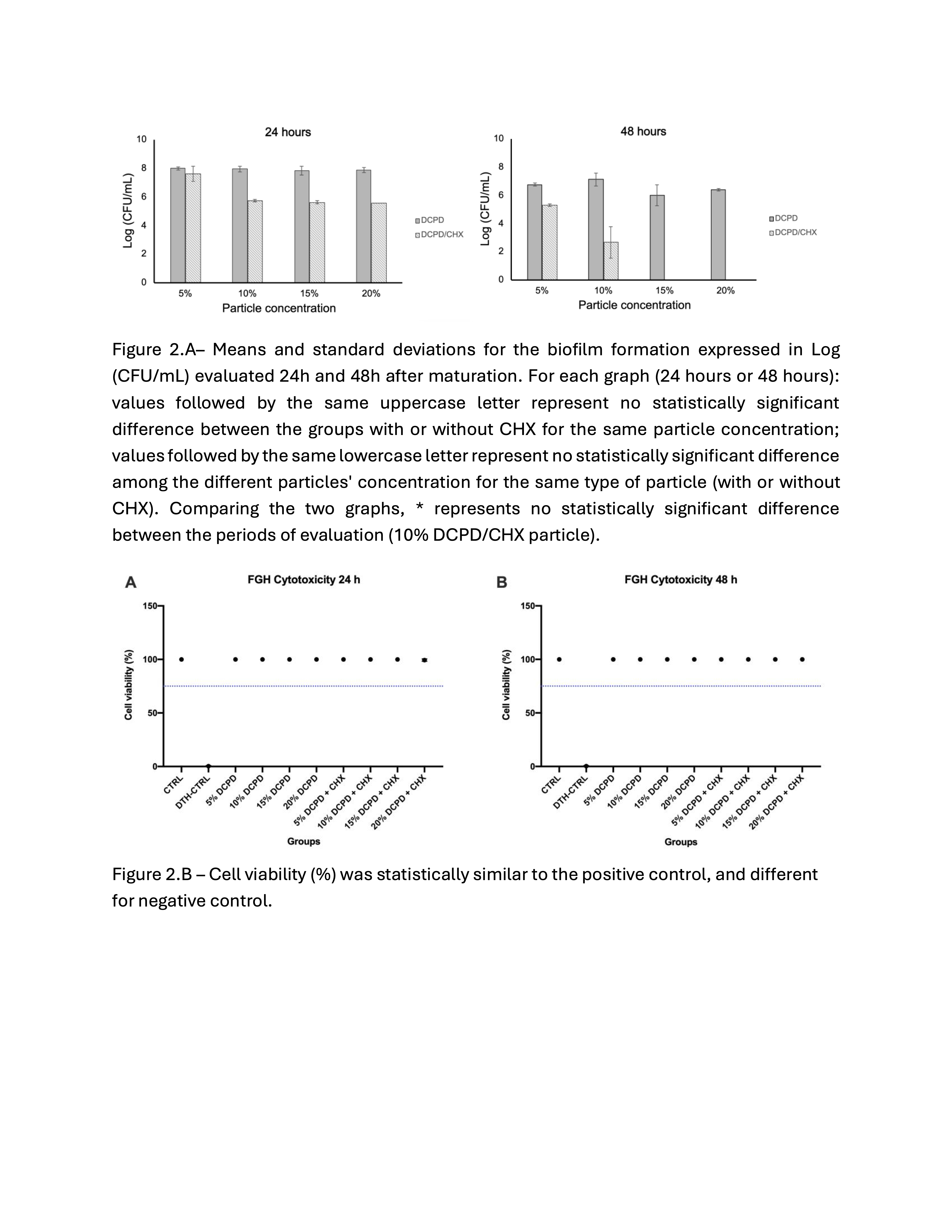IADR Abstract Archives
Evaluation of Antibacterial Activity and Cytotoxicity of Composites Containing DCPD/CHX-Particles
Objectives: This study aimed to evaluate the biofilm formation and cytotoxicity of BisGMA/TEGDMA-based composites containing calcium phosphate dihydrate (DCPD) particles, with and without chlorhexidine (CHX), after 24 and 48h.
Methods: Disc composites with a diameter of 5 mm and thickness of 1 mm were prepared with varying concentrations of DCPD (5%, 10%, 15%, and 20% by weight) with or without CHX, resulting in eight experimental groups. These composites were photopolymerized and stored in dark flasks before testing (n=6 for biofilm and n=3 for cytotoxicity). For the biofilm formation assay, S. mutans UA159 was cultured on BHI agar with amphotericin B and transferred to TYE medium with 1% sucrose until mid-log phase. Standardized inoculums were placed on the composite discs in 96- well plates. After 24 and 48h, biofilms were scraped from the discs, diluted, and plated on BHI agar. Colony counts (CFU/mm2) were determined after 48h of incubation at 37°C. Cell viability of human gingival fibroblasts (FGH) was assessed using the MTT assay. A 200 μL suspension of 10,000 cells/well was added to 96-well plates and incubated with the experimental composites. Controls included a blank (media only), a negative control (media with cells), and a positive control (150 μL of 20% methanol). After 24 and 48h, MTT assay was performed, and formazen crystals were quantified using a BioTek Synergy HT Plate Reader. Results were analyzed according to ISO 10993-5:2009 guidelines
Results: Composites with DCPD exhibited higher biofilm formation compared to those with DCPD/CHX. At 48h, composites with 15% and 20% DCPD/CHX showed significantly reduced biofilm formation, with some achieving zero CFU. Composites with DCPD alone showed lower CFU at 48h compared to 24h. All composites, regardless of DCPD or DCPD/CHX concentration, were noncytotoxic to gingival fibroblasts.
Conclusions: The results indicate that DCPD composites containing DCPC/CHX particles present an antibacterial effect against S.mutans in all concentrations for both stages of biofilm maturation (24h and 48h) and at a higher effect for the concentrations of 15% and 20% in weight. Composites containing both particles in any concentration are non-cytotoxic for gingival fibroblasts
Methods: Disc composites with a diameter of 5 mm and thickness of 1 mm were prepared with varying concentrations of DCPD (5%, 10%, 15%, and 20% by weight) with or without CHX, resulting in eight experimental groups. These composites were photopolymerized and stored in dark flasks before testing (n=6 for biofilm and n=3 for cytotoxicity). For the biofilm formation assay, S. mutans UA159 was cultured on BHI agar with amphotericin B and transferred to TYE medium with 1% sucrose until mid-log phase. Standardized inoculums were placed on the composite discs in 96- well plates. After 24 and 48h, biofilms were scraped from the discs, diluted, and plated on BHI agar. Colony counts (CFU/mm2) were determined after 48h of incubation at 37°C. Cell viability of human gingival fibroblasts (FGH) was assessed using the MTT assay. A 200 μL suspension of 10,000 cells/well was added to 96-well plates and incubated with the experimental composites. Controls included a blank (media only), a negative control (media with cells), and a positive control (150 μL of 20% methanol). After 24 and 48h, MTT assay was performed, and formazen crystals were quantified using a BioTek Synergy HT Plate Reader. Results were analyzed according to ISO 10993-5:2009 guidelines
Results: Composites with DCPD exhibited higher biofilm formation compared to those with DCPD/CHX. At 48h, composites with 15% and 20% DCPD/CHX showed significantly reduced biofilm formation, with some achieving zero CFU. Composites with DCPD alone showed lower CFU at 48h compared to 24h. All composites, regardless of DCPD or DCPD/CHX concentration, were noncytotoxic to gingival fibroblasts.
Conclusions: The results indicate that DCPD composites containing DCPC/CHX particles present an antibacterial effect against S.mutans in all concentrations for both stages of biofilm maturation (24h and 48h) and at a higher effect for the concentrations of 15% and 20% in weight. Composites containing both particles in any concentration are non-cytotoxic for gingival fibroblasts



